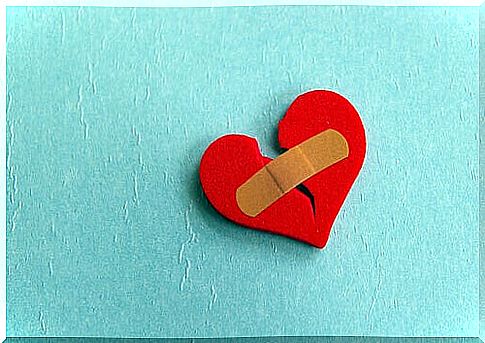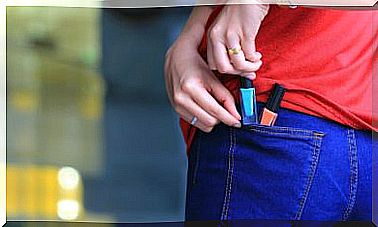The Broken Heart And Physical Pain

When we go through moments of great emotional suffering, we can come to affirm that our hearts ache. This phrase, halfway between the poetic and the literal, helps us to express the magnitude of the sorrow we are experiencing. And it is that a broken heart metaphorically speaking many times brings various physical ailments.
The physical and psychic spheres are not separated. On the contrary, they are completely connected and almost invariably problems in one also present manifestations in the other. Different scientific studies lead us to conclude that emotional pain can really be felt in the flesh.
My heart is broken
There are many vital situations that can lead us to affirm that our hearts are broken. The death of a loved one, a breakup in love, the betrayal of a friend, a disappointment from someone we fully trusted …
When we affirm that we are heartbroken, we are expressing that we harbor within us an overwhelming sadness, a longing of great magnitude, a pain that paralyzes us. With these words we try to show that the emotional suffering we are going through is so intense that it seems to become tangible.
Thus we feel confused, lost, vulnerable and devastated. We lose interest in everything around us and energy seems to leave our body. The present becomes unbearable and the future unimaginable. We begin to feel weak, fragile, and unable to cope with the adversity that hits us.

A pain that is felt on a physical level
However, it has been found, through various scientific studies, that the same brain region that functions as a processor of physical pain is also responsible for processing emotional pain. Thus, just as there are physical injuries that lead to chronic pain, there are also emotional injuries that many people cannot recover from.
The physical manifestations of emotional distress are diverse and well known to all. Who has not experienced a sharp throb in the throat when sadness or anguish was intense? Who has not felt the so-called knot in the stomach in a situation that generated anxiety?
Psychosomatic disorders accompany us since we are children, showing at an organic level the emotional load that we are not able to handle. Thus, many infants experience frequent headaches or digestive problems for which no physiological cause is found, as they are caused by psychological discomfort.
As adults we can also suffer muscle aches, headaches, heartburn or indigestion, skin irritations and a host of physical symptoms due to emotional causes. But undoubtedly the most surprising manifestation of this phenomenon is the so-called broken heart syndrome.

Broken heart syndrome
This disease called takotsubo cardiomyopathy does not literally break the heart, but it does deform it. When going through a situation of high emotional stress in the body, there is a sudden release of large doses of catecholamines.
The increase in this substance causes the heart rate to skyrocket, generating real and physical damage to the heart. Something tangible and easy to visualize in diagnostic tests. The person suffering from it experiences symptoms similar to those of a heart attack, such as chest pain and shortness of breath.
It is a condition for which there is treatment and that does not generate permanent sequelae. Even so, the phenomenon is important enough to invite us to think about it.
Build resilience to avoid a broken heart
Stressful experiences that can lead to broken heart syndrome are relatively common. Many people will go through them without ever experiencing this syndrome. In the same way, not all of us have the same predisposition to manifest somatic symptoms when we face emotional adversity.
The difference lies in the level of resilience we each have. That is, the capacities and personal resources that we have to deal with negative, unexpected or stressful situations. The coping strategies we use make a difference in the degree to which these experiences affect us.
Fortunately, resilience can develop and we are always on time to acquire new resources and more appropriate strategies. Work on yourself and your personal development to avoid that your body has to scream the pain that you were not able to express.









